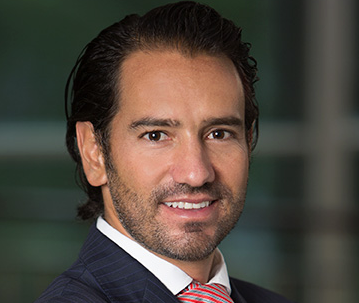“At 20% growth globally, ETFs represent the fastest growing part of asset management and Latin America is no exception. In fact, last year they grew by 23%,” says Nicolás (Nico) Gómez, who heads BlackRock’s iShares efforts in the LatAm and Iberia Region.
According to the manager and to the Greenwich Associates Latin America Survey – commissioned by BlackRock, Latin American institutional investors will continue to play a leading role in the growth of the industry, which according to BlackRock, will reach 12 trillion dollars in 2023 and 25 trillion dollars in 2030.
“Our fiduciary duty as asset managers is to educate the markets on international exposure and on the importance of investing more and more abroad,” says Nico, mentioning that “ETFs are the preferred instrument for Latin American investors for the construction of international portfolios.”
In his opinion, ETFs in the region are growing, maturing, and becoming more liquid mainly because, through internationalization processes, investors are looking for “country risk reduction, since most of their assets are in its same country”, where “local assets sometimes provide few options.”
“Another great feature driving the growth of ETFs is their ease of operation, which allows asset managers to take low-cost tactical positions.” For example, Nico mentioned that “This year saw some disinvestment in Europe and a little more investment in Asia, as well as a return to the US. Latin American investors also chose to increase their exposure to US short-term fixed income, as a dollarization process.”
Something important worth pointing out is that “the Latin American investor buys three types of iShares: those domiciled in the US, those in their country, and increasingly, iShares domiciled in Europe, UCITS iShares, and they are buying them there because they are becoming more and more liquid, but the main reason is their tax efficiency.”
Looking into Brazil
Mexico is the country with the most iShares in the region, with around 30 billion dollars in assets under management. It’s followed by Colombia with 12 billion, Chile with 11, Peru with 9, and Brazil with 5 billion. However, the survey sample concentrated 30% of respondents in Mexico, and 27% in Brazil. “In Brazil, we are seeing a market that previously invested almost 100% nationally and which is now going abroad due to the drop in rates,” concluded Nico.

